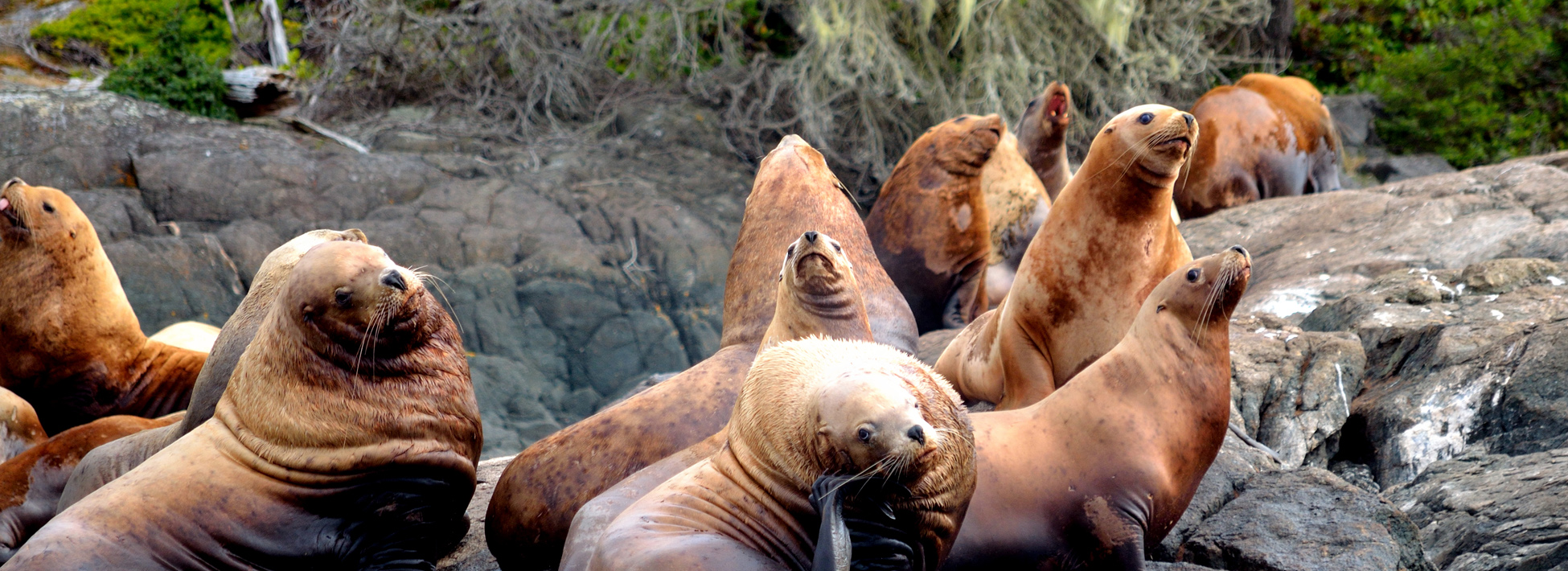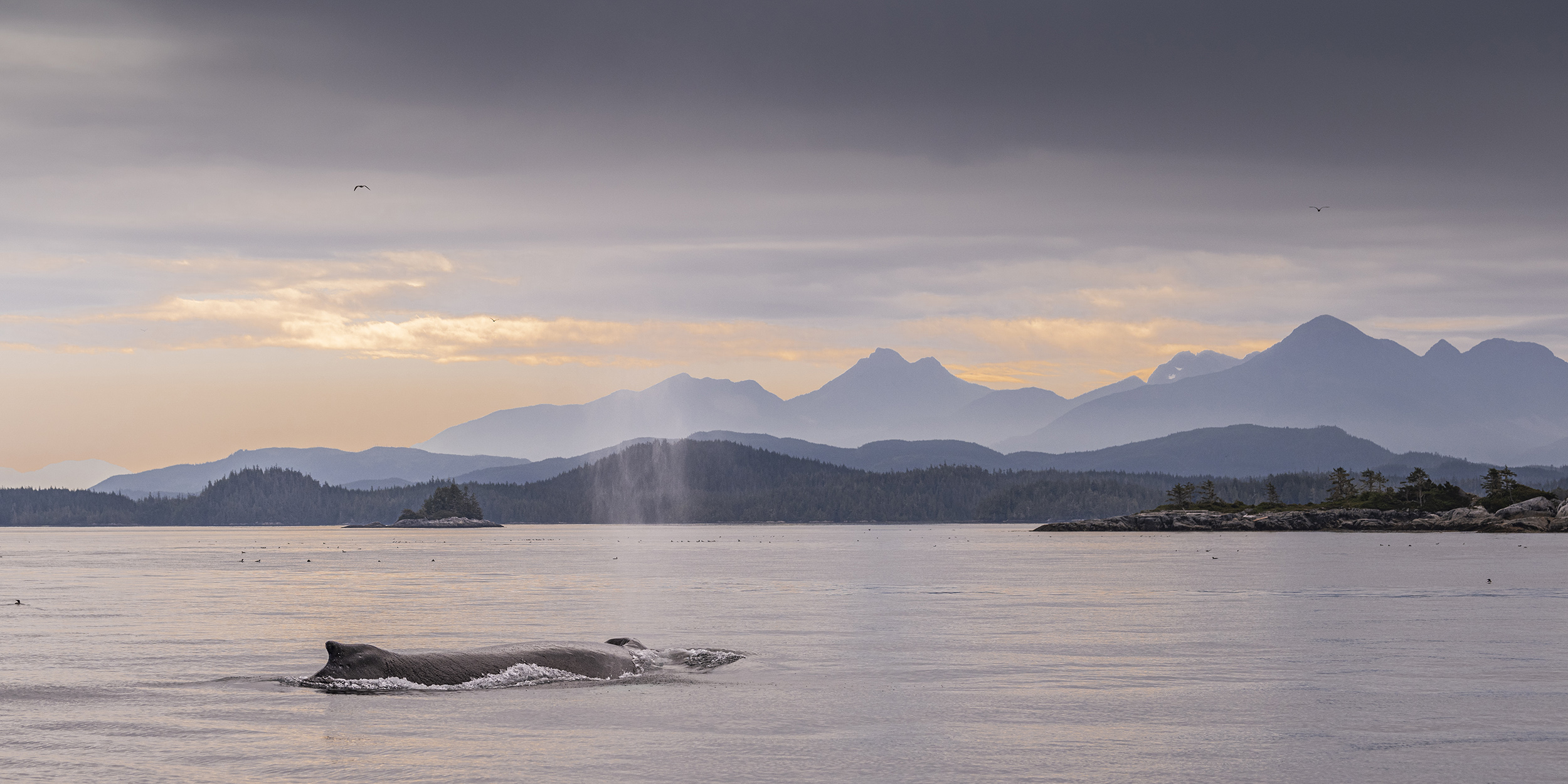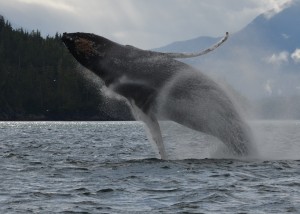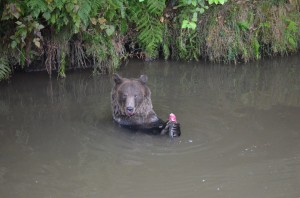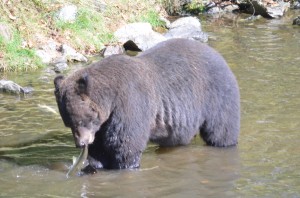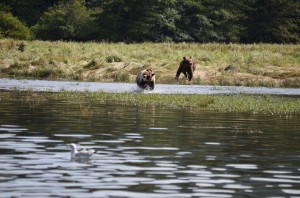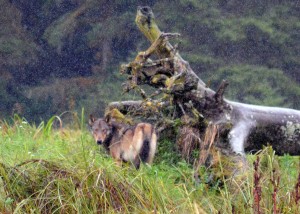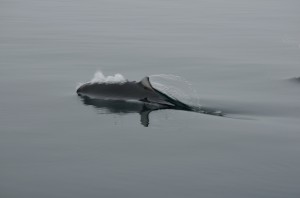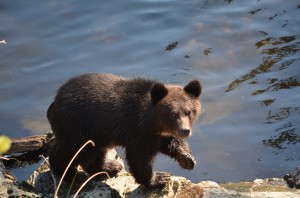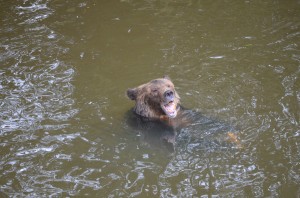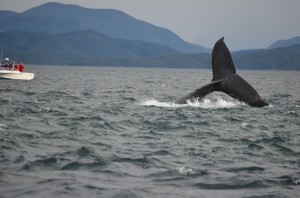
This summer we were fortunate to have several humpback mothers and calves remain in Grizzly Bear Lodge’s whale viewing area. The calves, at times, became very active often repeating fluke (tail) slaps ten to fifteen times in a row. These would frequently occur as a backward slap, meaning the top of the fluke would be hitting the water. The calves would also roll and twist and try to through their tails sideways out of the water. This photo taken by Angus shows how close the whales do come to boats (in this case my boat) while they are playing.
